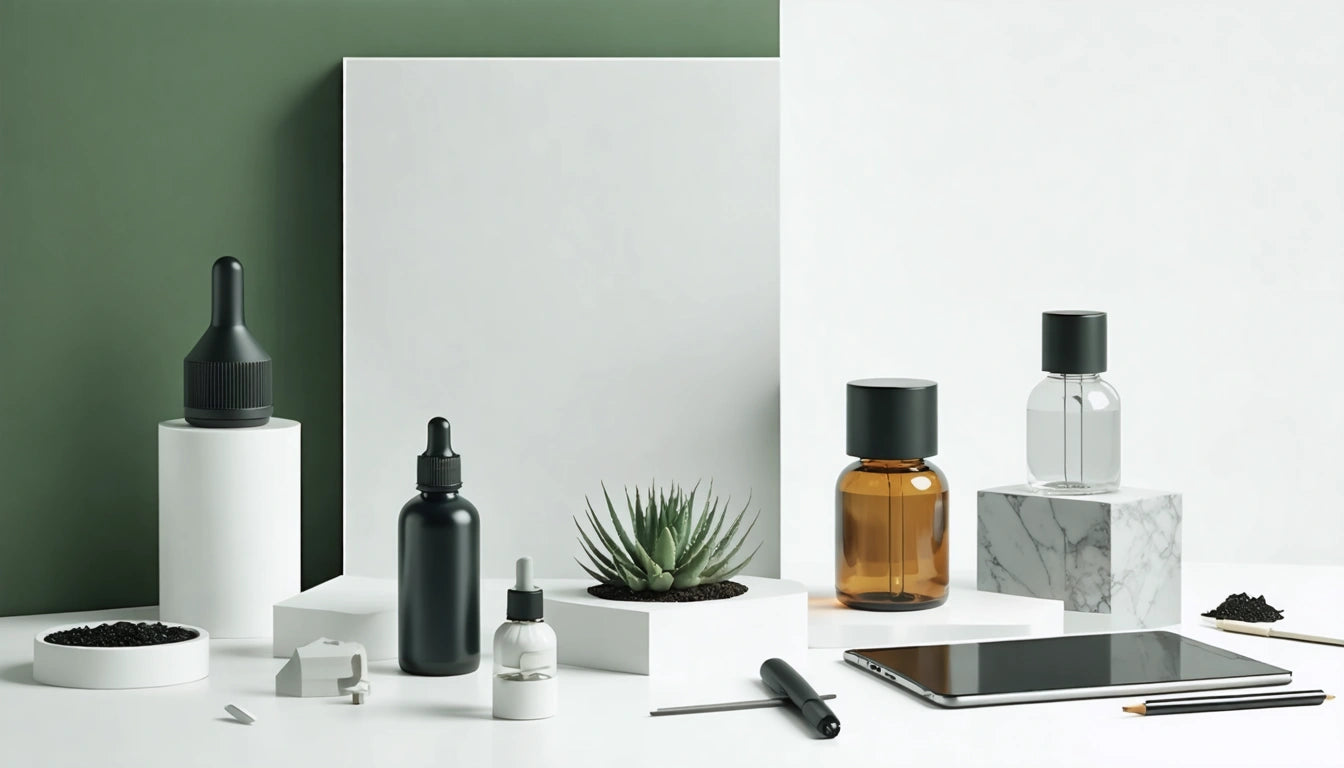Table of Contents
What Designers Need to Know About Packaging Dielines
Packaging dielines serve as the architectural blueprint for product packaging, translating creative concepts into manufacturable reality. For cannabis product designers, understanding dielines is crucial to creating packaging that not only looks appealing but also functions properly during production and use. This guide covers essential knowledge about packaging dielines that every designer should master.
Understanding Packaging Dielines: The Blueprint for Success
A dieline is a template that specifies the cut and fold lines for a packaging design. It serves as the structural foundation upon which all creative elements are built. According to this overview of dieline evolution, today's dielines have become increasingly sophisticated, incorporating smart features that streamline production.
The dieline process begins with understanding the product's physical requirements, compliance needs, and brand positioning. For cannabis products specifically, dielines must account for child-resistance features, regulatory information panels, and proper sealing mechanisms. When designing pre-roll packaging, for example, many brands are turning to custom-designed cone options that require precise dieline specifications to ensure proper fit and functionality.
Technical Specifications for Effective Dielines
Essential Components of a Dieline
- Cut lines (typically solid lines)
- Fold/score lines (typically dashed or dotted)
- Glue areas (often indicated with patterns)
- Bleed areas (usually 1/8 inch beyond trim)
- Safe zones (typically 1/4 inch inside trim)
- Registration marks
Proper dieline creation requires attention to material thickness, grain direction, and production methods. As explained in this workflow explanation, the material choice directly impacts how dielines must be constructed. Thicker boards require deeper scores, while flexible films need different specifications entirely.
Common Dieline Mistakes and How to Avoid Them
Even experienced designers can make critical errors when working with dielines. Common mistakes include:
Oversight Issues
- Incorrect bleed settings causing white edges
- Failing to account for material thickness at folds
- Placing crucial design elements too close to cut or fold lines
- Neglecting to check dieline accuracy with physical prototypes
Another frequent error is creating dielines without considering the full production workflow. As highlighted in this comprehensive dieline guide, designers must understand how their dielines will be interpreted by manufacturing equipment and production teams.
Dieline Software and Tools for Designers
Several software solutions can help designers create precise dielines:
- Adobe Illustrator with packaging plugins
- ArtiosCAD for structural design
- Esko Studio for 3D visualization
- PackagingDesignSoftware for templates
When selecting software, consider the complexity of your packaging needs and your team's expertise. For maintaining consistency across product lines, developing a comprehensive style guide that includes dieline specifications is essential.
Future Dieline Innovations Reshaping Packaging Design
The field of dieline design continues to evolve with technological advancements. Emerging trends include:
- Parametric dielines that automatically adjust to product specifications
- Sustainable design considerations built into dieline templates
- Augmented reality tools for visualizing dielines in real-world settings
- AI-assisted dieline optimization for material efficiency
These innovations are making dieline creation more accessible while reducing the technical burden on designers. For cannabis brands looking to stand out, creating compelling mockups based on accurate dielines is becoming easier than ever.
Understanding packaging dielines is no longer optional for designers in the cannabis industry. As packaging becomes increasingly important for brand differentiation and compliance, mastering the technical aspects of dieline creation ensures your designs move smoothly from concept to shelf. By avoiding common pitfalls and embracing new tools, designers can create packaging that not only looks great but also functions flawlessly throughout the production process.











Leave a comment
All comments are moderated before being published.
This site is protected by hCaptcha and the hCaptcha Privacy Policy and Terms of Service apply.